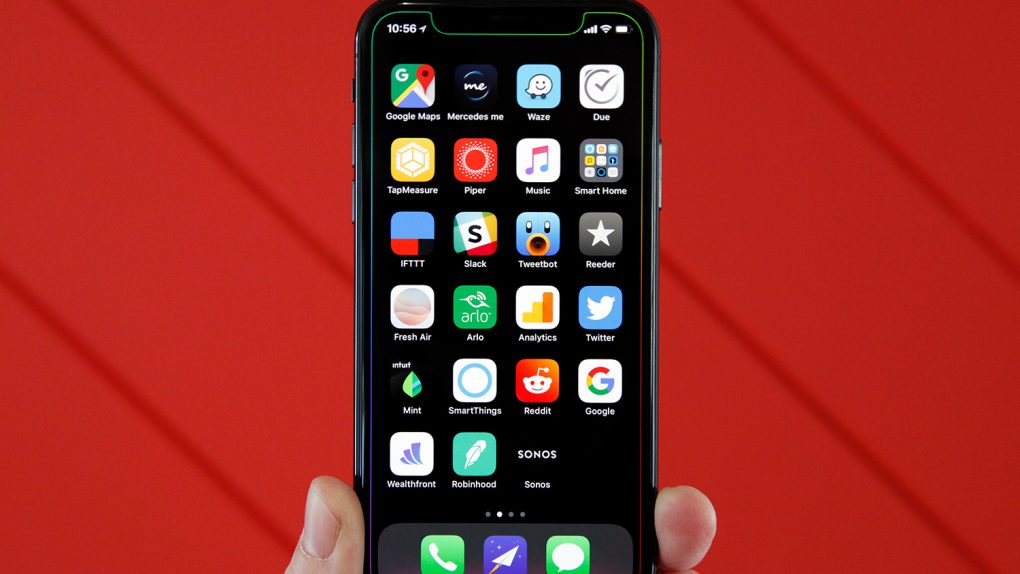In the smartphone industry, a pattern has developed over the past decade. Whether or not Apple is first with a new key technology or design, Android phone makers try as hard as they can to copy Apple’s iPhone as quickly as they can. There’s an endless supply of examples, but two in particular pertain to this article.
Apple unveiled the iPhone 5s in 2013, and it was the first iPhone to feature a Touch ID fingerprint scanner. Apple wasn’t the first smartphone maker to produce a phone with a fingerprint scanner, but no other vendors even batted an eye when companies like Motorola and HTC included the tech on their phones. Once Apple introduced Touch ID, however, every other phone maker on the planet rushed to add fingerprint sensor tech to their phones. Now, it’s next to impossible to find a globally available Android phone without biometric authentication facilitated by a fingerprint sensor.
Another example of Android phone makers playing follow the Apple is the notched display design Apple introduced on the iPhone X, and this example is even more pertinent to a new report issued early Tuesday morning.
In August last year, a smartphone startup called Essential released its first handset. The phone was among featured a new all-screen design with a small, round cutout at the top of the display for the front-facing camera. Precious few people actually bought the Essential PH-1, and no other Android phone makers of note even batted an eye at the design.
A month later in September, Apple unveiled the iPhone X with a different type of notch cut out of the top of the phone’s screen. Then this happened.
From little Chinese phone makers you’ve never even heard of to industry leaders like Huawei and LG, Android vendors can’t steal the iPhone X’s design quickly enough. But as we’ve discussed in several recent articles like this one titled “Good lord, Android phone makers, please just stop,” none of the Android phones that steal Apple’s iPhone X design have done it properly.
For one thing, the point of Apple’s notch is to keep the bezel surrounding the phone’s display the exact same size all the way around the screen, aside from the notch. But most Android copycats still have a big “chin” bezel under the screen because they don’t have the engineering prowess or budget to pull off Apple’s brilliant display design on the iPhone X.
The second purpose served by the notch is to house Apple’s advanced TrueDepth camera and sensor cluster, which enables Apple’s new Face ID technology on the iPhone X. No other smartphone on the planet has face scanning tech that’s anywhere near as advanced and secure as Apple’s, and a new report from Reuters suggest that will continue to be the case until at least next year.
It’s not that Android vendors don’t want to copy Apple’s new Face ID tech. They always want to copy Apple’s hot new tech, obviously. It’s that they can’t.
“Most Android phones will have to wait until 2019 to duplicate the 3D sensing feature behind Apple’s Face ID security, three major parts producers have told Reuters, handicapping Samsung and others on a technology that is set to be worth billions in revenue over the next few years,” Reuters reported on Tuesday morning.
The report continued, “According to parts manufacturers Viavi Solutions Inc, Finisar Corp and Ams AG, bottlenecks on key parts will mean mass adoption of 3D sensing will not happen until next year, disappointing earlier expectations. That means that China’s Huawei, Xiaomi and others could be a total of almost two years behind Apple, which launched Face ID with its iPhone X anniversary phone last September. In particular, Android producers are struggling to source vertical-cavity surface-emitting lasers, or VCSELs, a core part of Apple’s Face ID hardware.”
Apple’s supply chain mastery isn’t what it used to be. AirPods were released 15 months ago and Apple still isn’t shipping new online orders until more than a week after they’re placed. Several other products have been delayed, like the HomePod speaker that was finally released last month. But in the case of Face ID, Apple managed to lock down key component supply for more than a year, and it’s giving the company a big lead over Android vendors in an important new area that will play a huge role moving forward — not just in the smartphone market, but eventually across several different areas of the electronics industry.








